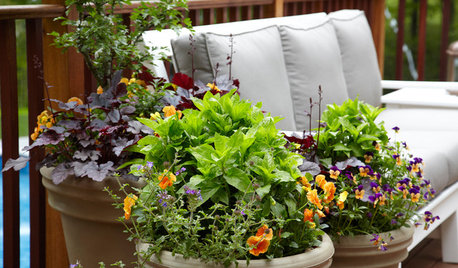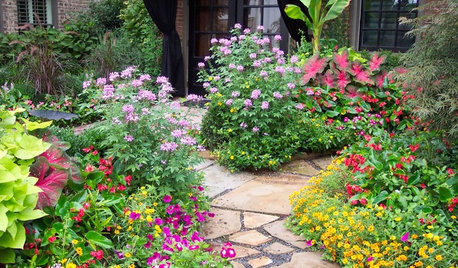Sweet Potatoes or Yams in Zone 3?
legless_marine
15 years ago
Related Stories

FOLIAGEGreat Design Plant: Ornamental Sweet Potato Vine
Versatile, fast growing, inexpensive and easy on the eyes, ornamental sweet potato vine has it all
Full Story
GARDENING GUIDES3 Ways to Revel in Summer Garden Sweetness
Patiently observe what works and doesn’t work in your landscape
Full Story
GARDENING AND LANDSCAPINGWorld of Design: 10 Home Gardeners Show Us Their Sweet Summer Harvests
From New York to Tokyo, these gardeners have turned their yards, terraces and rooftops into places of bounty
Full Story
KITCHEN STORAGEPantry Placement: How to Find the Sweet Spot for Food Storage
Maybe it's a walk-in. Maybe it's cabinets flanking the fridge. We help you figure out the best kitchen pantry type and location for you
Full Story
GARDENING GUIDES6 Captivating Roses for an Alluringly Fragrant Garden
Perfume your garden with aromas from richly spicy to lightly sweet, without sacrificing an inch of color
Full Story
GARDENING AND LANDSCAPINGPorch Life: Banish the Bugs
Don't let insects be the bane of your sweet tea and swing time. These screening and product ideas will help keep bugs at bay on the porch
Full Story
FLOWERS8 Knockout Flowers for a Fall Container Garden
Your cups will overfloweth with color and interest this fall when you plant these vivid seasonal garden classics
Full Story
LIFEIs Cabin Fever Real? Share Your Story
Are snow piles across the U.S. leading to masses of irritability and boredom? We want to hear your experience
Full Story
GARDENING GUIDESTexas Gardener: What to Do in June
Don't be discouraged by the dry summer heat — hardy plants, container gardens and smart watering can help landscapes thrive
Full Story0

EDIBLE GARDENSSummer Crops: How to Grow Tomatoes
Plant tomato seedlings in spring for one of the best tastes of summer, fresh from your backyard
Full Story






mike_in_paradise
sonj7
Related Professionals
Allentown Landscape Architects & Landscape Designers · Mitchellville Landscape Architects & Landscape Designers · Norwood Landscape Contractors · Dallas Landscape Contractors · Eustis Landscape Contractors · Fort Mill Landscape Contractors · Glendale Heights Landscape Contractors · Hollywood Landscape Contractors · Indio Landscape Contractors · Melrose Landscape Contractors · Milton Landscape Contractors · Rio Linda Landscape Contractors · St. Louis Landscape Contractors · Markham Landscape Contractors · Pike Creek Valley Gardeners & Lawn CareRainbow
amiigaff
ljpother
sheryl_ontario